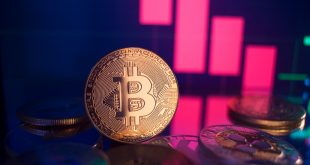On Friday, the dollar was poised to mark its most significant weekly decline of the year, propelled by comments from the head of the Federal Reserve signaling a growing confidence in interest rate cuts in the upcoming months. Meanwhile, the yen surged amidst mounting speculation surrounding potential interest rate hikes in Japan.
Market Sentiment and US Jobs Data
Traders eagerly anticipate the release of US jobs data scheduled for later in the week, which could either validate or challenge market expectations regarding a rate cut by June. Federal Reserve Chairman Powell’s remarks suggesting imminent rate adjustments have intensified market scrutiny over economic indicators.
Powell’s Remarks and Monetary Policy Outlook
Powell’s assertion that the Federal Reserve is “not far away” from acquiring the requisite confidence to enact interest rate cuts has underscored the central bank’s dovish stance, contributing to dollar weakness.
European Central Bank and Euro Dynamics
In contrast, the European Central Bank (ECB) maintained its key interest rate at four percent on Thursday, hinting at a potential rate cut in June. However, the euro appreciated against the dollar as investors perceived greater flexibility for rate adjustments in the US.
Currency Performance Overview
The euro surged to its highest level in almost two months, reaching $1.0956 during Asian trading, reclaiming its position within a year-long trading range. Notably, it posted a weekly gain of approximately 1 percent against the dollar.
The yen witnessed a notable ascent of 1.5 percent since the week’s commencement, marking its most substantial weekly performance since December. Positive signals regarding wages and prices in Japan have fueled speculations regarding the country’s first interest rate hike in 17 years. Consequently, the yen surpassed its 50-day moving average and reached a one-month high of 147.54 against the dollar in early Asian trading on Friday.
The dollar’s depreciation facilitated significant gains for the Australian and New Zealand dollars, rising by 1.5 percent and 1.1 percent, respectively, throughout the week. Additionally, the British pound surged by 1.2 percent, hitting a 2024 high of $1.2820.
Conclusion
The currency market landscape reflects shifting monetary policy expectations and economic indicators, driving volatility and strategic positioning among investors. Continued vigilance over central bank communications and economic data releases remains crucial for navigating currency market fluctuations effectively.
 Noor Trends News, Technical Analysis, Educational Tools and Recommendations
Noor Trends News, Technical Analysis, Educational Tools and Recommendations





